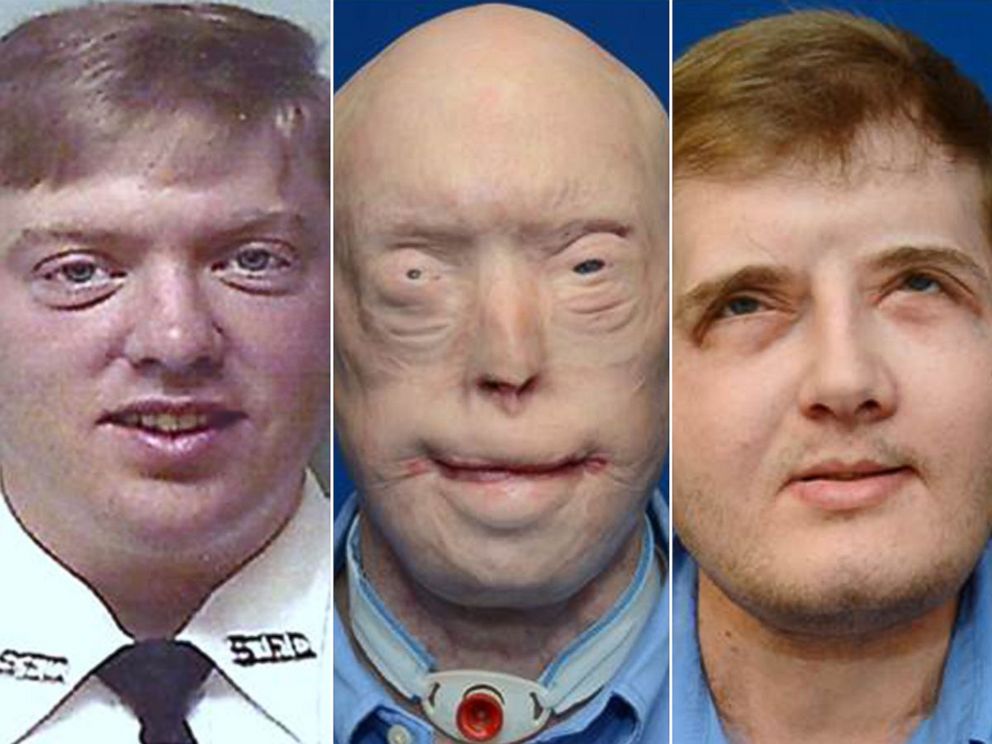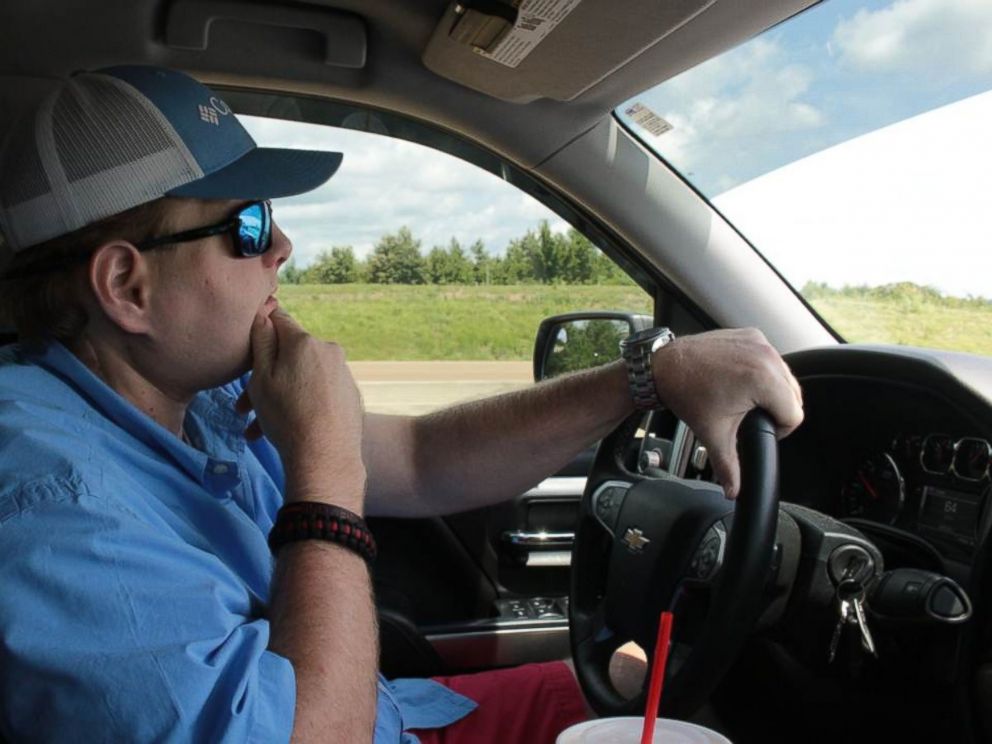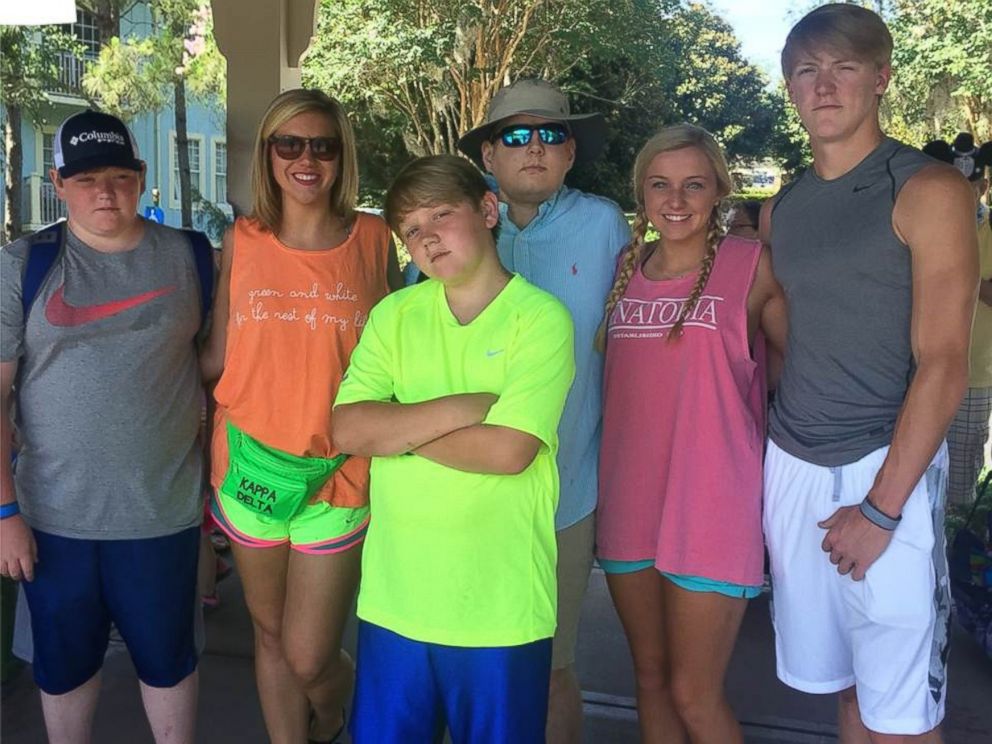How a Severely Burned Former Firefighter Is Doing 1 Year After Face Transplant Surgery
The ex-firefighter underwent the most extensive face transplant ever performed.
— -- One year after undergoing the most extensive face transplant ever performed, which was covered by "Nightline" in an Emmy-nominated special edition, Pat Hardison continues to thrive.
“I’m happy to tell you that I’m doing great!” Hardison, 42, said at a press conference at NYU Langone Medical Center on Wednesday. “I like to say I’m still the same old Pat, but that would not give enough credit to the amazing journey I have gone through this past year.”

Hardison, a former volunteer firefighter, was critically injured responding to a house fire on Sept. 5, 2001. The fire left him with severe burns that took his scalp, ears, eyelids, nose and lips. Without eyelids, Hardison was also slowly losing his vision.Willing to take a chance to get his life back and feel normal again, Hardison underwent the face transplant surgery at NYU Langone Medical Center. The procedure is so extreme and so risky that his doctors warned him he only had a 50-50 chance of surviving it.
Since receiving his new face from a donor, Hardison said his eyelids and ability to blink have greatly improved his vision.“My family and I took a trip to Disney World this past June -- and I swam in the pool with them. That’s something I had not done in 15 years!” Hardison said. “I now can, once again, drive a car, and I am able to sleep more soundly.”

Hardison has had follow-up procedures, including surgery to remove his feeding and breathing tubes, which he no longer needs, and to adjust his new eyelids and lips.
He hopes to meet the family of his donor, David Rodebaugh, and a meeting is scheduled for this fall.
“I would like to thank my donor family, who made the difficult decision to donate to me during a very difficult time in their lives,” Hardison said.
Renown reconstructive surgeon Dr. Eduardo Rodriguez, who performed the transplant and is the chair of the hospital’s Wyss Department of Plastic Surgery, said he’s amazed by Hardison’s recovery.
Hardison has not had an incident in which his body attempted to reject his new face, and the amount of daily medications he has to take has been reduced overtime mainly due to the fact that he has not had a rejection episode.
“We are amazed at Pat’s recovery, which has surpassed all of our expectations,” Rodriguez said in a press release. “Most significant is the lack of a rejection episode. We believe this has much to do with the methodical approach we took in the matching process to ensure that Patrick’s donor provided the most favorable match. Doing so also has allowed us to reduce the levels of certain medications that Pat takes to prevent rejection.”
“No more stares from strangers. I’m pretty much back to being a normal guy, doing normal activities,” Hardison said.

After his accident during the rescue mission that left his face severely burned in 2001, Hardison said he thought he would never be the same again.
“It was terrible,” Hardison told “Nightline" in 2015, three months after the transplant. “I mean, I left home one day a normal dad, leaving to go to work, just a blonde-haired, blue-eyed -- that had everything going, I thought, and just like that everything changed drastically.”
In 2001, Hardison and his second wife Chrissi were raising their three children in his hometown of Senatobia, Mississippi. At 27, he was a charming, successful salesman who ran the family tire business, but his real passion was working with the local volunteer fire department where he was a captain.
“It was my way of life, that was what I did,” he said. “I didn’t do it to make a living, I did it because I loved it.... At this department it’s different. It’s not like a fire department that volunteers, we’re a brotherhood.”
Hardison said he doesn’t remember much of what happened after he and three of his fellow firefighters entered a burning building to look for a woman.
“[My mask] was melting to my face,” Hardison said. “My hose [was] already melted.”
He pulled the mask off, held his breath and closed his eyes, which doctors say saved his throat and lungs from smoke inhalation damage and from losing his vision. He doesn’t remember exactly how he managed to escape the inferno but by the time he got out, he was unrecognizable.
“There was nothing left of his face to tell you who he was,” Bricky Cole, one of Hardison’s friends and another volunteer firefighter on-scene that day, told “Nightline” in 2015.
His friends rushed to save Hardison’s life, but they didn’t realize who they were working on until he was being loaded into an ambulance.
Hardison spent 63 days at the hospital recovering from the burns, and when he got home, Hardison said his three children -- Alison, 6, Dalton, 3, and Averi, 2 -- were terrified of him.
Even though Chrissi and the children learned to accept his scars, seeing their reactions was devastating for Hardison. He underwent more than 70 surgeries over the next decade to try to rebuild his mouth, nose and eyelids using skin grafts. He even got implants to help anchor prosthetic ears.
“There were no moments of hope,” Chrissi Hardison told “Nightline” in 2015. “I remember talking to the doctors and thinking I had to allow myself to accept that he would not look the way he did before. ... Every time he would go back for surgery, I would think, ‘He’ll probably come out and look maybe like he did before.’ I had no clue, no concept of how severe it was even months into it.”
But each surgery only resulted in minor improvements. Unable to have what he really wanted -- his old life back -- Hardison spiraled into depression.
The cycle of surgery and painful recovery took a heavy toll on Hardison and his family, including Chrissi, who was caring for him at home. Even though they had two more kids after the accident, their marriage was strained, and for a time, Hardison became withdrawn and was addicted to pain medication. After 10 years of marriage, he and Chrissi divorced.
Later, Hardison started to consider an option that had only recently been demonstrated to be possible: a face transplant.
At the urging of a friend, Hardison sent his medical records to Dr. Eduardo Rodriguez, a pioneering reconstructive surgeon who had just completed the most extensive face transplant ever performed to date, replacing the face, jaw and tongue of a man severely disfigured by a shotgun blast. The 2012 surgery had been a success and Rodriguez was looking for his next patient.
In 2012, Rodriguez and his team began the process of vetting not just Hardison, but his family, friends and neighbors in Mississippi. Rodriguez wanted to make sure that Hardison fully understood the surgical risks, both the physical and psychological recovery, and that there was a possibility his body could reject the transplant and he could die. He also wanted to make sure Hardison was of good character and would be compliant with his post-surgery responsibilities, including medical appointments and daily medicine intake.
When the evaluations were finished, Rodriguez said he had found the perfect patient.
“Here's a guy with a huge personality who just wants to get to the solution,” Rodriguez told “Nightline” in 2015. “He's very gung-ho individual, you can see it. It's his nature and he was ready to sign whatever it took to move this thing along. For patients like that, which we do value, it's important for us to kind of slow the process down and ensure that they completely understand what they're getting into.”
Face Transplant Surgery Explained Step-By-Step
To move forward, they needed a donor, one that would fit very specific criteria. Not only were they looking for a donor that matched Hardison’s skin color, hair color and blood type, but the skeletal structure also had to be similar.
“The blood type obviously has to match,” Rodriguez said. “We didn't want any viruses. We're not looking for any patient that has significant exposures, I.V. drug use and the like. We also look at tattoos, not so much that tattoos are bad, but individuals that get numerous tattoos, we're concerned about contamination of any form. We're looking for a patient that has not had any malignancy and no facial injuries. We're looking at skeletal measurements we want them to match skeletally. We look at specific distances of their eyes or nose or mouth, the lips, so we're very specific in a face transplant.”
Hardison was placed on New York’s transplant donor list in Aug. 2014, and Rodriguez and his team began working closely with LiveOnNY, the organ procurement non-profit organization that matches organ donors with patients in and around New York City.
In July 2015, Hardison finally got the call he had hoped for, but it meant tragedy for another family.
David Rodebaugh, or Dave to his friends, loved bikes. He worked as a bike mechanic and was an accomplished BMX rider. When he moved to Brooklyn from Ohio a few years ago, he found a new family in the bike messenger community and with a group who call themselves the “Lock Foot Posi."
“It's like the old Christmas movie, the old Rudolph movie, where there's the Land of Misfit Toys,” said Al Lopez, who owns a bike messenger company called Cannonball Couriers and is one of Rodebaugh’s best friends. “And we're all kind of like misfits from somewhere. Wherever we came from for whatever reason we've united over bikes.... It doesn't really matter what you wear or how you ride you know like if you're like. If you're down and you're like on the bike and you're one of us.”
His friends said there wasn’t a trick Rodebaugh wouldn’t try or a bike he couldn’t fix, and he even won the Red Bull-sponsored Brooklyn MiniDrome cycling competition in 2014.
“Dave was a free spirit for sure and he loved what he loved,” Lopez said. “He loved bikes. He loved to go fast. He loved his friends, he loved this family. He loved adventure like, that was, that was Dave.”
The Face Transplant Donor: Dave Rodebaugh's Story
In July 2015, Rodebaugh was riding without a helmet in Brooklyn when he crashed and hit his head. A few weeks later, he was declared brain-dead at the hospital. He was 26 years old.
His friends honored him with a memorial ride over the Williamsburg Bridge, and when a representative with LiveOnNY approached his mother about donating his organs, she accepted.
When LiveOnNY president and CEO Helen Irving informed Rodriguez that she had a potential donor for the face transplant surgery, the blood, genes and other features underwent a series of tests. When it was determined that it looked like a viable match, Rodriguez called Hardison in Mississippi with the news.
“When you look at the facial skeleton ... they were only off by one or two millimeters,” he said.
On Aug. 14, 2015, Hardison was prepped for surgery and wheeled into one operating room, while the donor was wheeled into an adjacent room. Before starting, the surgical team held a moment of silence to honor Rodebaugh.
In a carefully coordinated surgery, Rodriguez slowly removed the donor’s face and scalp, including the outer skin, tissue, nerves and muscle, as the surgical team next door worked to remove the skin on Hardison’s face. With each step, Rodriguez updated the surgical team working on Hardison so that the two teams would remain in sync, and then they placed the donor face on Hardison. Among the trickiest parts of the surgery, Rodriguez said, was connecting the blood vessels.
“We got one chance to align to basically land this on the moon perfectly,” Rodriguez said.
In total, the surgery took 26 hours to finish. Rodebaugh’s heart, liver and kidneys were also donated, along with his corneas, bone and skin tissue.
Face Transplant Patient Sees Himself for the First Time Post-Surgery
Nine days after the surgery, Hardison was doing well, and he looked at himself in the mirror for the first time. His forehead and cheekbones began adding shape to his face, but he had to start the process of re-learning how to speak and swallow, two functions severely affected by the surgery.
Today, Hardison says the surgery has given him back his life. Hardison continues to share his story in the hopes that others with similar injuries may one day consider the possibility of a face transplant.
“I’m here today because I want others to see that there is hope beyond the scars of injury. I am especially proud to share my story with other injured firefighters and first responders, as well as injured members of the Armed Services,” Hardison said on Wednesday. “If sharing my story helps just one person explore the possibility of a face transplant, then it’s been worth it.”
Face Transplant Recovery: The First 90 Days




